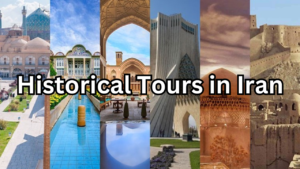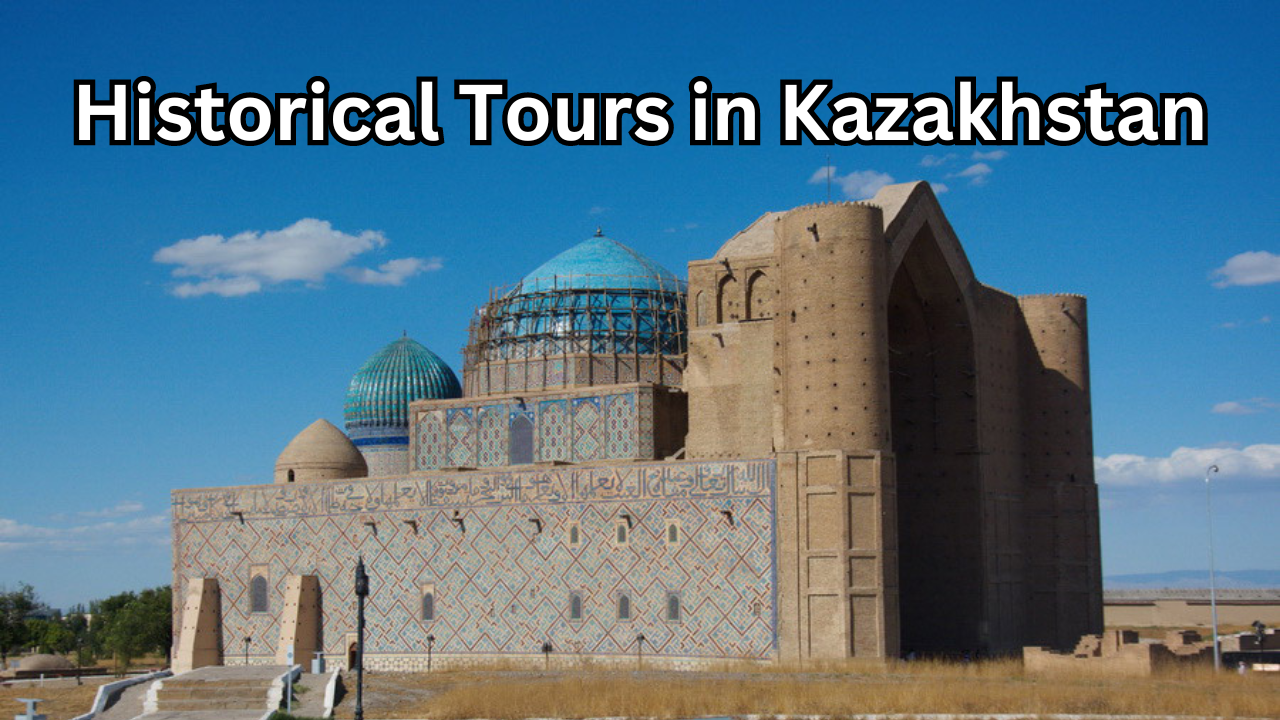
Table of Contents
Introduction:
Kazakhstan, with its vast landscapes and rich cultural heritage, offers a treasure trove of historical sites that provide insights into its ancient civilizations, Silk Road connections, and Soviet-era history. Exploring these historical landmarks through guided tours not only unveils the country’s past but also showcases its vibrant present. Let’s delve into the fascinating Historical Tours in Kazakhstan has to offer, each highlighting a unique aspect of this diverse and historically significant nation.
Brief overview of Kazakhstan’s historical significance:
Kazakhstan occupies a pivotal place in history due to its strategic location bridging East and West along the ancient Silk Road. It has been a crossroads of cultures, trade, and civilizations for centuries, leading to a rich and diverse historical tapestry. From nomadic tribes and the powerful Kazakh Khanate to the influence of Russian colonization and the Soviet era, Kazakhstan’s history is marked by transitions, interactions, and resilience, making it a captivating destination for history enthusiasts.
Importance of historical tours in understanding Kazakhstan’s heritage:
Historical tours play a crucial role in unraveling Kazakhstan’s heritage by providing immersive experiences and insights into its past. These tours offer access to archaeological sites, museums, ancient monuments, and cultural landmarks that hold stories of conquests, trade routes, cultural exchanges, and societal evolution. By exploring these historical treasures with knowledgeable guides, visitors can gain a deeper understanding of Kazakhstan’s diverse ethnicities, traditions, languages, and historical milestones. Such experiences not only foster cultural appreciation but also promote heritage conservation and sustainable tourism practices, ensuring that Kazakhstan’s rich history continues to be shared and preserved for generations to come.
Almaty City Tour
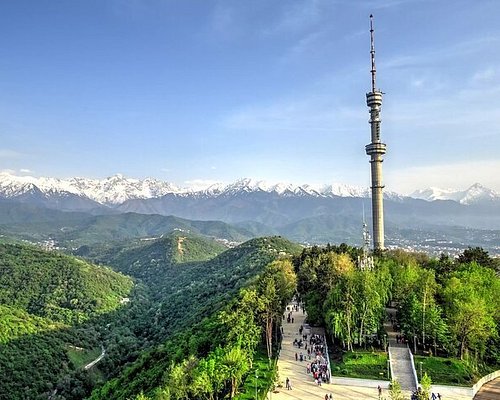
Embarking on an Almaty City Tour is a journey through time and culture, where the vibrant past and dynamic present of Kazakhstan converge. Beginning at the Central State Museum, visitors are immersed in the nation’s rich history, from ancient nomadic civilizations to the Soviet era, through a captivating collection of artifacts and exhibits. The tour then leads to the Zenkov Cathedral, a stunning wooden masterpiece that showcases the architectural prowess and religious heritage of the region. As the tour progresses, Panfilov Park and its WWII memorial offer a poignant reminder of Kazakhstan’s sacrifices and resilience during tumultuous times. This comprehensive tour not only unravels the historical layers of Almaty but also highlights its modern charm, making it a captivating experience for history enthusiasts and cultural explorers alike.
Central State Museum:
The Central State Museum in Almaty is a cultural gem that offers a comprehensive overview of Kazakhstan’s history, culture, and heritage. Established in 1931, the museum houses a vast collection of artifacts, ranging from archaeological finds dating back thousands of years to ethnographic displays showcasing the diverse traditions of Kazakhstan’s various ethnic groups. Visitors can explore exhibits on nomadic life, ancient civilizations like the Scythians and Saka tribes, as well as displays highlighting the country’s Soviet past and modern developments. The museum’s collections include traditional costumes, crafts, musical instruments, religious artifacts, and historical documents, providing a deep dive into Kazakhstan’s multifaceted identity.
Zenkov Cathedral:
The Zenkov Cathedral, also known as the Ascension Cathedral, is a striking architectural marvel located in Panfilov Park. Built entirely of wood without the use of nails, this cathedral is one of the largest wooden buildings in the world and a testament to traditional Kazakh craftsmanship. Constructed in the early 20th century, the cathedral features a unique Russian Orthodox design with colorful onion domes and intricate interior decorations. Visitors can admire the cathedral’s ornate iconostasis, stunning stained glass windows, and serene atmosphere, making it a significant religious and cultural landmark in Almaty.
Panfilov Park and WWII Memorial:
Panfilov Park, named after the Panfilov Heroes who valiantly defended Moscow during World War II, is not only a scenic green space but also a site of historical significance. At the heart of the park stands the Memorial of Glory, a solemn tribute to the Kazakh soldiers who sacrificed their lives in the war. The memorial complex includes a towering monument featuring soldiers and a eternal flame symbolizing remembrance and honor. Surrounding the memorial are beautifully landscaped gardens, walkways, and benches, providing a tranquil setting for reflection and paying homage to Kazakhstan’s wartime heroes. Additionally, Panfilov Park is home to the Zenkov Cathedral and other notable monuments, making it a focal point for history, culture, and recreation in Almaty.
Turkestan Tour
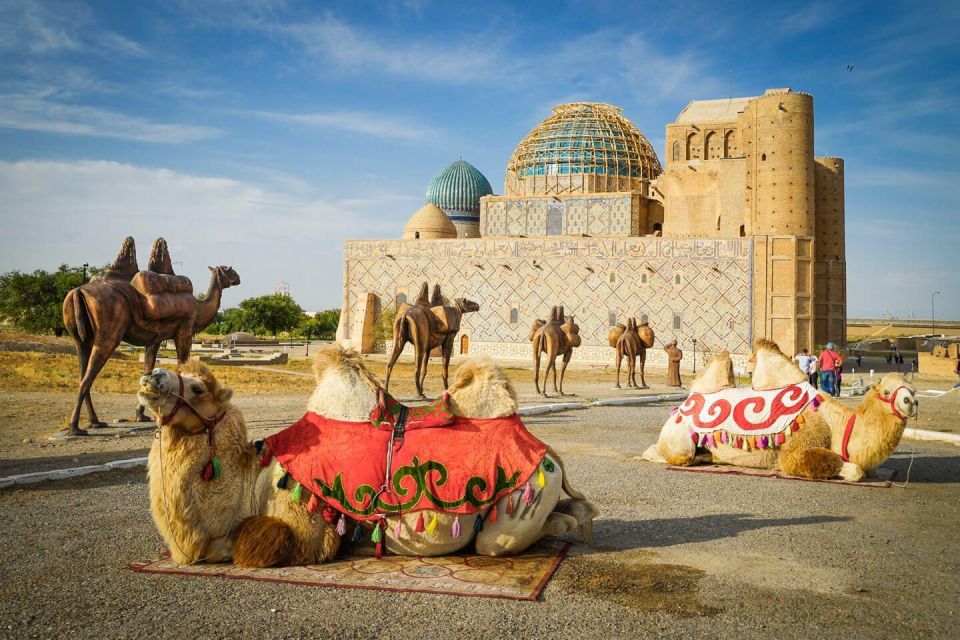
Embarking on a Turkestan Tour is a captivating journey into the heart of Kazakhstan’s spiritual and historical heritage. At the center of this tour is the magnificent Mausoleum of Khoja Ahmed Yasawi, a UNESCO World Heritage site and a testament to the region’s rich Sufi traditions. The mausoleum’s intricate architecture, adorned with turquoise tiles and majestic domes, reflects the spiritual significance of Turkestan as a revered pilgrimage destination. Beyond the mausoleum, the tour delves into Turkestan’s role as a vibrant cultural hub along the Silk Road, where diverse civilizations converged and left their mark. Exploring ancient streets, bazaars, and archaeological sites, visitors gain a profound appreciation for Turkestan’s historical depth and its enduring legacy in Kazakhstan’s cultural tapestry.
Mausoleum of Khoja Ahmed Yasawi
The Mausoleum of Khoja Ahmed Yasawi stands as a monumental symbol of spiritual devotion and architectural grandeur in Turkestan, Kazakhstan. Constructed in the 14th century, this magnificent mausoleum is dedicated to Khoja Ahmed Yasawi, a revered Sufi mystic and poet whose teachings had a profound impact on Central Asian spirituality. The mausoleum’s intricate design, featuring turquoise domes, ornate tilework, and exquisite geometric patterns, reflects the artistic and spiritual fervor of the era. Its central dome, soaring high above, is a testament to the enduring legacy of Khoja Ahmed Yasawi and the enduring spiritual significance of Turkestan.
Historical significance of Turkestan as a spiritual center
Turkestan holds immense historical significance as a spiritual center that has attracted pilgrims and seekers of knowledge for centuries. It served as a hub for Islamic scholarship, Sufi mysticism, and cultural exchange along the ancient Silk Road. Scholars and thinkers from diverse backgrounds congregated in Turkestan, contributing to a vibrant intellectual and religious atmosphere. The city’s mosques, madrasas, and shrines became renowned centers of learning and spiritual enlightenment, shaping the cultural identity of the region and fostering a legacy of tolerance and intellectual curiosity.
UNESCO World Heritage site
The inclusion of the Mausoleum of Khoja Ahmed Yasawi as a UNESCO World Heritage site underscores its universal value and historical significance. Designated in 2003, this prestigious recognition highlights the mausoleum’s exceptional architectural and cultural importance, representing a masterpiece of Timurid architecture and Central Asian Islamic art. The UNESCO status not only promotes conservation efforts but also elevates Turkestan’s global standing as a custodian of heritage and a testament to the enduring legacy of Khoja Ahmed Yasawi’s spiritual teachings.
Charyn Canyon Tour

Embarking on a Charyn Canyon Tour is a breathtaking journey into a natural wonderland that also holds significant historical and cultural value in Kazakhstan. The canyon, often referred to as the “Grand Canyon’s little brother,” showcases stunning rock formations, rugged cliffs, and deep gorges carved by the Charyn River over millions of years. Beyond its awe-inspiring beauty, Charyn Canyon also bears traces of ancient civilizations and the historic Silk Road trade route. Visitors can marvel at ancient petroglyphs etched into the canyon walls, offering glimpses into the region’s past inhabitants and their way of life. The tour provides a unique blend of natural splendor and historical intrigue, making it a must-visit destination for nature enthusiasts and historical tours in Kazakhstan.
Natural beauty and historical context along the Silk Road
The Charyn Canyon Tour offers a captivating blend of natural beauty intertwined with the historical context of the Silk Road. As one traverses through the canyon’s mesmerizing landscapes, the echoes of ancient trade routes and cultural exchanges become palpable. The rugged terrain, sculpted by millennia of geological processes, serves as a living testament to the region’s dynamic history as a crossroads of civilizations. Travelers are immersed in the same vistas that once greeted Silk Road caravans, connecting distant lands and fostering cultural interchange.
Petroglyphs and ancient civilization remnants
Within the depths of Charyn Canyon lie hidden treasures in the form of petroglyphs and remnants of ancient civilizations. These petroglyphs, ancient rock carvings etched by past inhabitants, offer a window into the lives, beliefs, and artistic expressions of prehistoric peoples. They depict scenes of hunting, rituals, and mythical creatures, providing invaluable insights into the rich cultural tapestry that thrived along the Silk Road. Exploring these ancient sites is akin to deciphering a historical puzzle, unraveling the mysteries of the past.
Exploration of unique landscapes
The Charyn Canyon Tour promises an exhilarating exploration of unique landscapes that seem straight out of a painter’s imagination. Towering rock formations, surreal rock spires known as “Valley of Castles,” and hidden oasis-like pockets create a diverse and captivating terrain to traverse. Each twist and turn reveals a new spectacle, from sweeping vistas of the canyon’s depths to lush vegetation thriving in unexpected niches. This journey through Charyn Canyon’s unique landscapes is not just a visual feast but also a spiritual and sensory experience that leaves an indelible mark on every traveler.
Aksu-Zhabagly Nature Reserve Tour
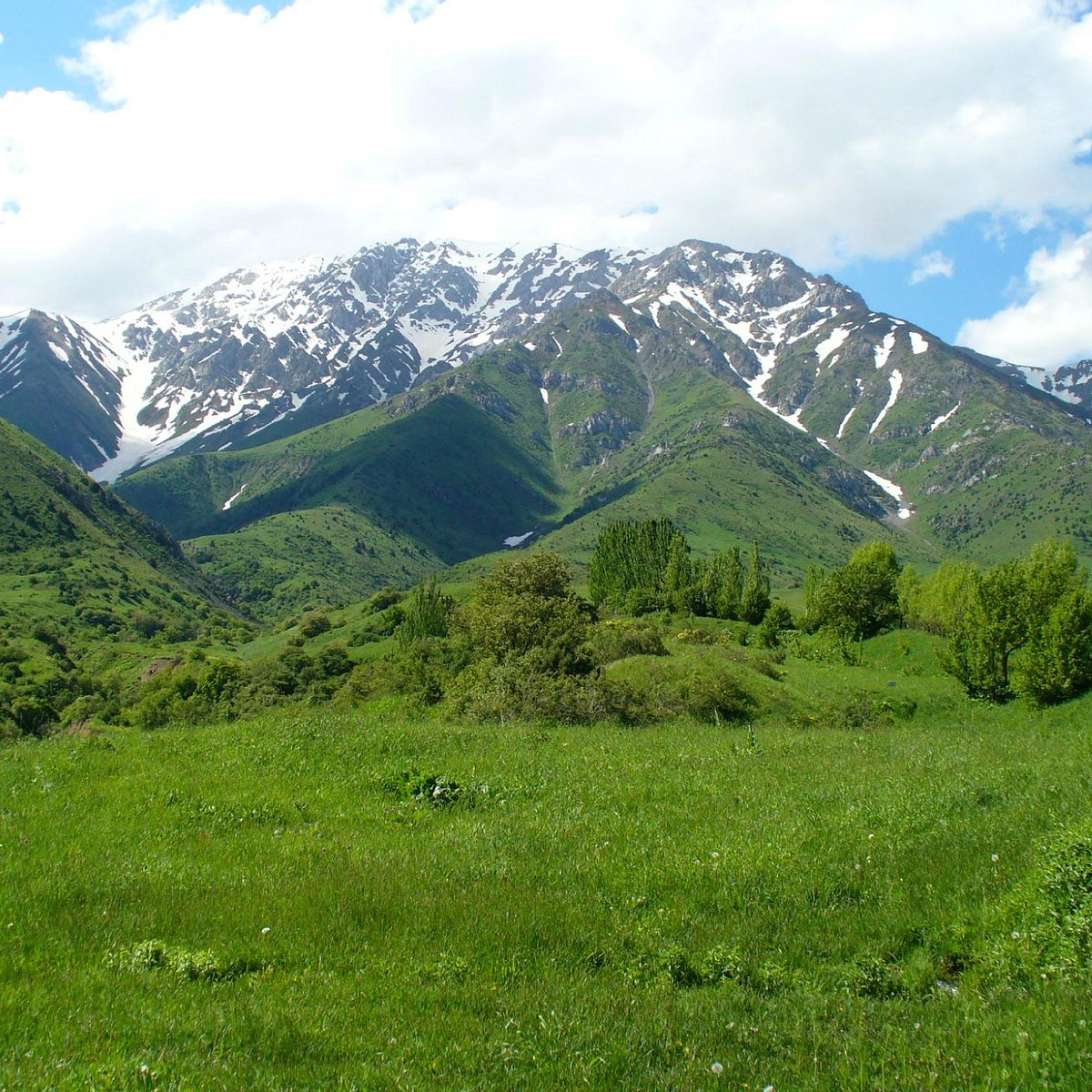
Embarking on an Aksu-Zhabagly Nature Reserve Tour is a journey into the pristine wilderness and ecological diversity of Kazakhstan. As the oldest nature reserve in Central Asia, Aksu-Zhabagly boasts a breathtaking landscape of rugged mountains, lush valleys, and pristine rivers that have remained relatively untouched by human intervention. The tour offers nature enthusiasts a chance to explore this biodiverse haven, home to rare and endemic species of flora and fauna. From sighting elusive snow leopards and ibex to marveling at the colorful array of alpine flowers, every step in Aksu-Zhabagly is a discovery of the natural wonders that thrive in this protected sanctuary. Beyond its ecological significance, the reserve also holds historical and cultural value, with ancient petroglyphs, nomadic heritage sites, and traditional Kazakh communities adding depth to the tour experience. A journey through Aksu-Zhabagly Nature Reserve is not just an adventure into nature but also a profound connection with Kazakhstan’s environmental heritage.
Diverse flora and fauna
Aksu-Zhabagly Nature Reserve is renowned for its exceptional diversity of flora and fauna, making it a paradise for nature enthusiasts and researchers alike. The reserve’s rugged terrain, ranging from alpine meadows to forested slopes, supports a wide array of plant species, including rare endemic flowers such as Tulipa greigii and Iris iliensis. Likewise, the reserve is home to a diverse wildlife population, including endangered species like the snow leopard, Tien Shan brown bear, and Siberian ibex. Birdwatchers can delight in spotting golden eagles, bearded vultures, and other avian treasures soaring above the reserve’s pristine landscapes.
Ancient petroglyphs and archaeological sites
The Aksu-Zhabagly Nature Reserve is not only a haven for biodiversity but also a treasure trove of ancient petroglyphs and archaeological sites. These remnants of ancient civilizations offer a glimpse into the region’s rich cultural heritage, with rock carvings depicting hunting scenes, nomadic life, and spiritual motifs dating back thousands of years. Archaeological sites within the reserve, such as ancient settlements and burial mounds, provide insights into the lifestyles and traditions of past inhabitants, contributing to a deeper understanding of Kazakhstan’s historical narrative.
Preservation of natural and historical heritage
Aksu-Zhabagly Nature Reserve plays a vital role in the preservation of both natural and historical heritage. As a protected area, it serves as a crucial habitat for rare and endangered species, contributing to global conservation efforts. Simultaneously, the reserve’s efforts to safeguard ancient petroglyphs, archaeological sites, and traditional nomadic culture contribute to the preservation of Kazakhstan’s cultural legacy. By promoting sustainable tourism practices and environmental conservation, Aksu-Zhabagly ensures that future generations can continue to appreciate and benefit from the intrinsic value of this remarkable natural and historical heritage.
Semey (Semipalatinsk) Tour
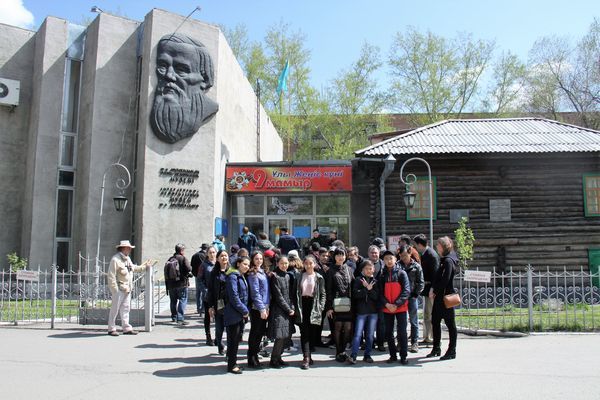
Embarking on a Semey (Semipalatinsk) Tour is a captivating exploration of Kazakhstan’s historical and cultural heritage. Located in the eastern part of the country, Semey (formerly Semipalatinsk) is a city steeped in history and renowned for its contributions to literature, music, and intellectual discourse. The tour typically begins with a visit to the Dostoevsky Museum, where visitors can delve into the life and works of the renowned Russian writer Fyodor Dostoevsky, who spent time in Semipalatinsk during his exile. The museum showcases personal belongings, manuscripts, and insights into Dostoevsky’s literary genius.
Continuing the tour, visitors can explore the Abay Museum, dedicated to Abay Kunanbayev, a prominent Kazakh poet, philosopher, and composer. The museum offers a fascinating glimpse into Abay’s life, his cultural impact, and his contributions to Kazakh literature and music. Additionally, the tour often includes visits to historical landmarks such as the Trinity Cathedral, which reflects the city’s diverse architectural influences.
One of the tour’s highlights is the opportunity to visit the former Semipalatinsk Nuclear Test Site, located outside the city. This site holds immense historical significance as one of the primary locations for Soviet nuclear testing during the Cold War era. Today, it serves as a somber reminder of the environmental and humanitarian consequences of nuclear testing, making it a poignant and educational stop on the Semey Tour.
Overall, a Semey (Semipalatinsk) Tour offers a multifaceted experience, blending literary, cultural, historical, and scientific insights into a compelling narrative of Kazakhstan’s past and present. It provides a deeper understanding of the city’s role in shaping Kazakhstan’s intellectual landscape, its cultural heritage, and its contributions to global history.
Dostoevsky Museum
The Dostoevsky Museum stands as a tribute to the literary legacy of Fyodor Dostoevsky, one of Russia’s most celebrated writers. Located in Semey (formerly Semipalatinsk), this museum offers a fascinating glimpse into Dostoevsky’s life and works during his time in exile. Visitors can explore rooms filled with personal belongings, original manuscripts, and insightful exhibits that shed light on Dostoevsky’s literary genius, philosophical ideas, and his profound impact on Russian literature. The museum’s immersive experience allows visitors to step into the world of Dostoevsky and gain a deeper appreciation for his enduring contributions to literature and intellectual discourse.
Abay Museum and cultural significance
The Abay Museum holds significant cultural importance as a tribute to Abay Kunanbayev, a revered figure in Kazakh literature, music, and philosophy. Abay’s legacy transcends generations, and the museum provides a comprehensive overview of his life, achievements, and cultural impact. Visitors can explore exhibits showcasing Abay’s poetry, musical compositions, philosophical writings, and his role in promoting Kazakh cultural identity and unity. The museum’s cultural significance extends beyond preserving Abay’s memory; it serves as a source of inspiration and pride for the Kazakh people, highlighting the richness and diversity of Kazakhstan’s cultural heritage.
Historical landmarks in Semey
Semey boasts a wealth of historical landmarks that offer insights into the city’s past and cultural heritage. The Trinity Cathedral, a striking architectural masterpiece, stands as a symbol of Semey’s religious and cultural diversity, blending Russian Orthodox and Kazakh architectural elements. Another notable landmark is the Semey Drama Theater, known for its performances showcasing Kazakh theatrical arts and cultural storytelling. Additionally, the city’s historic streets, parks, and monuments provide glimpses into Semey’s evolution from a trading post to a vibrant cultural center. Exploring these historical landmarks in Semey offers a captivating journey through time, highlighting the city’s resilience, cultural vibrancy, and contributions to Kazakhstan’s historical narrative.
Petropavlovsk Tour
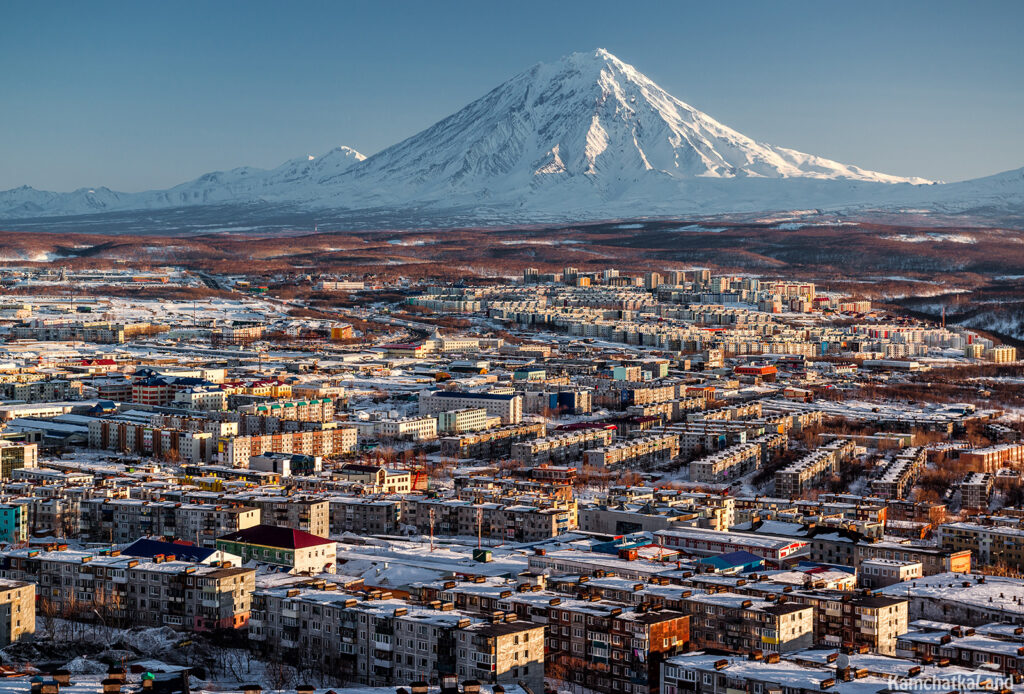
Embarking on a Petropavlovsk Tour is an enriching exploration of Kazakhstan’s historical and cultural heritage in the northern region of the country. Petropavlovsk, with its blend of Soviet-era architecture and historical landmarks, offers a window into Kazakhstan’s past and present. The tour typically includes visits to significant sites such as the Regional Local Lore Museum, where visitors can delve into the region’s history, ethnography, and natural history through engaging exhibits and displays. The museum showcases artifacts, documents, and artworks that highlight Petropavlovsk’s evolution from a frontier outpost to a thriving regional center.
Another highlight of the tour is the Holy Trinity Cathedral, a magnificent Orthodox church known for its beautiful frescoes, ornate iconostasis, and architectural grandeur. The cathedral serves as a spiritual and cultural focal point, reflecting the enduring influence of Russian Orthodox traditions in the region. Additionally, the tour may encompass explorations of Soviet-era monuments and landmarks, providing insights into Petropavlovsk’s role during the Soviet period and its subsequent transformations.
Overall, a Petropavlovsk Tour offers a multifaceted journey through history, art, and culture, allowing visitors to appreciate the diverse layers of Kazakhstan’s heritage in a northern setting. It provides a deeper understanding of Petropavlovsk’s significance as a historical and cultural hub, showcasing the region’s resilience, cultural diversity, and contributions to Kazakhstan’s national identity.
Regional Local Lore Museum
The Regional Local Lore Museum in Petropavlovsk stands as a repository of the region’s rich history, culture, and natural heritage. Visitors embarking on a tour of this museum are greeted with a fascinating array of exhibits, artifacts, and interactive displays that offer insights into Petropavlovsk’s past. From archaeological finds and ethnographic collections to documents detailing the region’s historical milestones, the museum provides a comprehensive overview of Petropavlovsk’s evolution over time. Exhibitions showcasing traditional crafts, folklore, and the diverse ethnic groups that call the region home further enrich the museum experience, making it a must-visit destination for those seeking to understand Petropavlovsk’s cultural tapestry.
Holy Trinity Cathedral
The Holy Trinity Cathedral, a prominent landmark in Petropavlovsk, is a testament to the city’s religious heritage and architectural splendor. This Orthodox cathedral, with its stunning frescoes, intricate iconostasis, and majestic domes, serves as a spiritual sanctuary and cultural symbol. Visitors to the cathedral can admire its interior adorned with religious art, participate in religious services, and learn about the cathedral’s historical significance as a center of Orthodox worship in the region. The Holy Trinity Cathedral’s timeless beauty and spiritual ambiance make it a highlight of any Petropavlovsk tour, inviting contemplation and appreciation of Kazakhstan’s religious traditions.
Soviet-era historical sites
Petropavlovsk’s tour often includes visits to Soviet-era historical sites, providing a glimpse into the city’s past as a significant center during the Soviet period. Soviet-era monuments, government buildings, and memorials reflect the ideological and architectural influences of that era. The tour may encompass sites such as the Monument to the Heroes of the Soviet Union, Soviet-style apartment blocks, and administrative buildings that once played pivotal roles in shaping the city’s social and political landscape. Exploring these Soviet-era historical sites offers a nuanced understanding of Petropavlovsk’s history, highlighting its connections to broader historical narratives and the enduring legacies of the Soviet era in Kazakhstan.
Aktobe City Tour
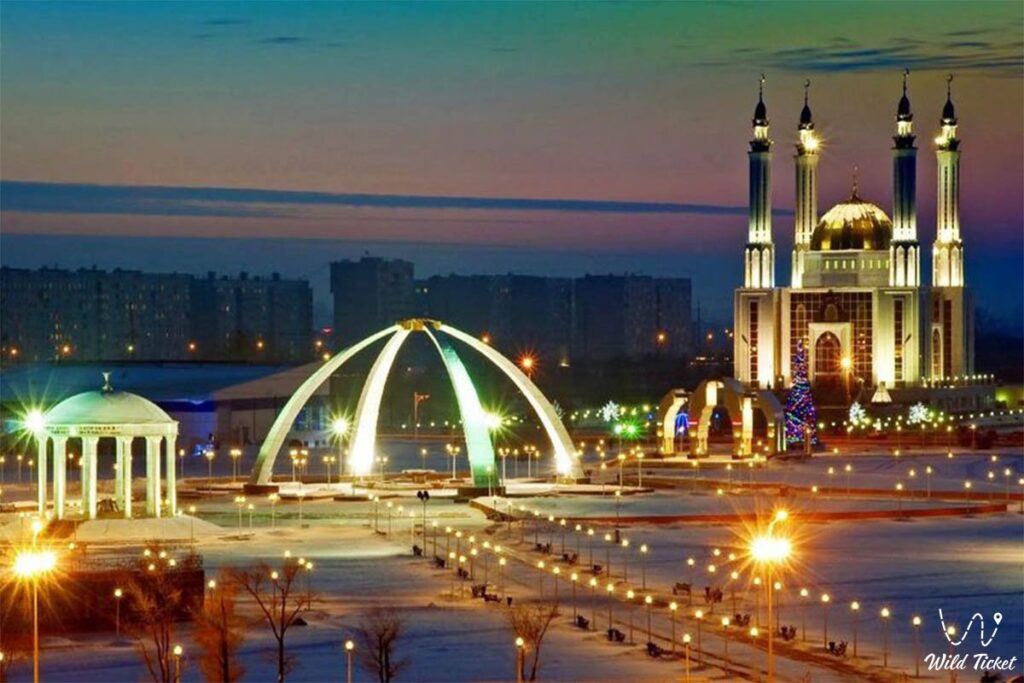
Embarking on an Aktobe City Tour is a captivating journey through Kazakhstan’s cultural, historical, and architectural heritage. Aktobe, located in the western part of the country, offers a blend of modern development and historical landmarks that showcase its rich past. The tour typically includes visits to the Aktobe Regional Local Lore Museum, where visitors can delve into the region’s history, traditions, and cultural diversity through engaging exhibits and artifacts. The museum’s collections span from ancient artifacts to contemporary artworks, providing a comprehensive overview of Aktobe’s evolution over time.
Another highlight of the tour is the Triumphal Arch, a majestic monument that pays homage to Aktobe’s role in the Soviet era and commemorates significant historical events. The arch stands as a symbol of resilience and progress, blending architectural grandeur with historical significance. Additionally, the tour may encompass visits to Soviet-era monuments, parks, and cultural landmarks that reflect Aktobe’s contributions to Kazakhstan’s cultural mosaic.
Overall, an Aktobe City Tour offers a multifaceted exploration of history, culture, and urban development, allowing visitors to appreciate the city’s unique identity and its place within Kazakhstan’s narrative. It provides insights into Aktobe’s historical milestones, cultural heritage, and ongoing contributions to the country’s cultural and economic landscape, making it a rewarding experience for travelers interested in discovering Kazakhstan’s western regions.
Aktobe Regional Local Lore Museum
The Aktobe Regional Local Lore Museum serves as a gateway to understanding the rich history and cultural heritage of Aktobe. Visitors embarking on a tour of this museum are treated to a fascinating journey through time, with exhibits and artifacts that chronicle the region’s evolution from ancient times to the present day. The museum’s collections feature archaeological finds, historical documents, traditional crafts, and artworks that showcase Aktobe’s diverse ethnicities, traditions, and contributions to Kazakhstan’s cultural tapestry. Through interactive displays and immersive experiences, visitors gain insights into Aktobe’s past, including its nomadic heritage, connections to the Silk Road, and modern developments.
Triumphal Arch and Soviet history
The Triumphal Arch stands as a striking monument that encapsulates Aktobe’s Soviet history and commemorates significant milestones in the city’s development. Built during the Soviet era, the arch serves as a symbol of resilience, progress, and triumph over challenges. Its architectural grandeur and historical significance make it a focal point for understanding Aktobe’s role in the Soviet narrative, reflecting themes of unity, patriotism, and cultural identity. The Triumphal Arch’s presence in Aktobe’s urban landscape invites contemplation of the city’s past achievements and ongoing transformations.
Cultural exploration of Aktobe
Cultural exploration of Aktobe extends beyond historical landmarks to encompass a vibrant tapestry of arts, traditions, and community life. The city’s cultural scene includes theaters, art galleries, music venues, and cultural festivals that showcase Aktobe’s artistic talents and cultural diversity. Visitors can immerse themselves in traditional Kazakh music, dance performances, and culinary delights, experiencing firsthand the warmth and hospitality of Aktobe’s people. Exploring Aktobe’s cultural offerings offers a deeper appreciation for the city’s dynamic identity and its contributions to Kazakhstan’s cultural landscape, fostering cross-cultural exchange and dialogue.
Astana (Nur-Sultan) Tour
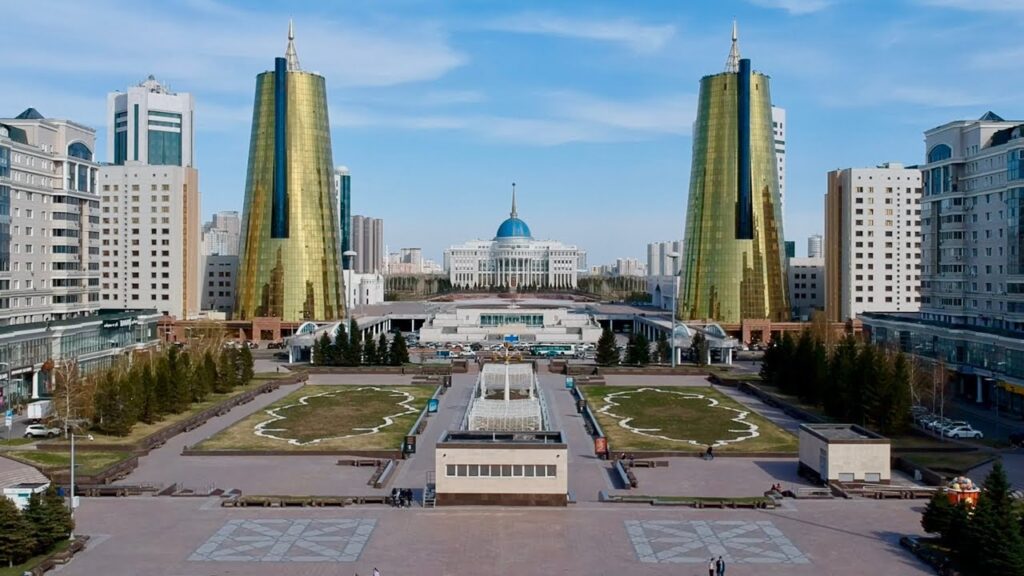
Embarking on an Astana (Nur-Sultan) Tour is a captivating journey through the modern and historical facets of Kazakhstan’s capital city. Formerly known as Astana and now renamed Nur-Sultan, this city represents the country’s rapid development, architectural innovation, and cultural vibrancy. The tour typically begins with a visit to the Museum of the First President, offering insights into Kazakhstan’s post-Soviet era and the vision of its founding leader, Nursultan Nazarbayev. The museum’s exhibits showcase the country’s political, economic, and social transformations, providing a deeper understanding of Nur-Sultan’s evolution into a global city.
Continuing the tour, visitors can explore architectural marvels such as the Hazret Sultan Mosque, a magnificent Islamic center known for its grandeur, intricate design, and spiritual significance. The mosque’s towering minarets and ornate interiors reflect Kazakhstan’s multicultural heritage and its embrace of religious tolerance. Additionally, the tour may include a visit to the Palace of Peace and Reconciliation, a symbolic monument dedicated to fostering global harmony and dialogue among different cultures and religions.
One of the highlights of an Astana (Nur-Sultan) Tour is the opportunity to witness the city’s futuristic skyline, characterized by iconic buildings like the Bayterek Tower, Khan Shatyr Entertainment Center, and the Nur-Astana Mosque. These architectural landmarks blend modernity with cultural symbolism, showcasing Nur-Sultan’s ambition to become a global hub of innovation, diplomacy, and cultural exchange. Overall, an Astana (Nur-Sultan) Tour offers a fascinating blend of history, culture, and contemporary developments, making it a must-visit destination for travelers seeking to experience Kazakhstan’s dynamic capital city.
Museum of the First President
The Museum of the First President in Nur-Sultan serves as a window into Kazakhstan’s modern history and the visionary leadership of Nursultan Nazarbayev, the country’s founding president. This museum offers a comprehensive exploration of Kazakhstan’s post-Soviet era, political evolution, economic development, and cultural achievements under President Nazarbayev’s leadership. Exhibits within the museum showcase key moments, policies, and initiatives that have shaped Nur-Sultan (formerly Astana) into a thriving capital city. Visitors can delve into interactive displays, multimedia presentations, and historical artifacts that highlight Kazakhstan’s journey towards nation-building and global integration.
Hazret Sultan Mosque
The Hazret Sultan Mosque stands as a majestic symbol of Nur-Sultan’s multicultural heritage, architectural excellence, and religious tolerance. This grand mosque, one of the largest in Central Asia, is renowned for its intricate Islamic design, stunning interiors, and spiritual ambiance. Visitors to the mosque can marvel at its towering minarets, expansive prayer halls, and ornate calligraphy that adorns its walls and domes. The Hazret Sultan Mosque serves as a focal point for Islamic worship, cultural events, and interfaith dialogue, reflecting Kazakhstan’s commitment to fostering harmony and unity among diverse religious communities.
Modern and historical fusion in Nur-Sultan
Nur-Sultan (formerly Astana) is a city that seamlessly blends modernity with historical legacy, creating a fusion of architectural styles, cultural influences, and technological advancements. The city’s skyline showcases a juxtaposition of futuristic skyscrapers, iconic landmarks, and traditional Kazakh motifs, symbolizing Nur-Sultan’s aspirations for progress, innovation, and global connectivity. From the avant-garde Bayterek Tower and Khan Shatyr Entertainment Center to the serene Nur-Astana Mosque and historical Presidential Palace Ak Orda, Nur-Sultan embodies a harmonious coexistence of past and present, tradition and modernity. Exploring this modern and historical fusion in Nur-Sultan offers a captivating glimpse into Kazakhstan’s dynamic spirit, cultural richness, and vision for the future.
Karakol Tour
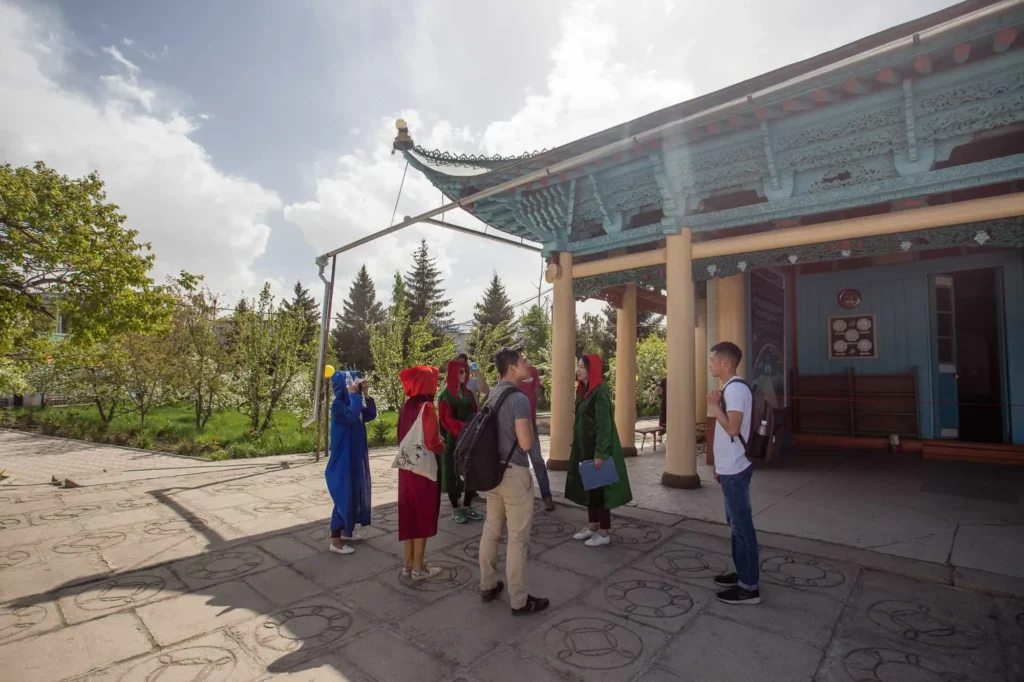
Embarking on a Karakol Tour is a captivating journey into the heart of Eastern Kazakhstan’s cultural heritage and natural beauty. Karakol, nestled at the foothills of the majestic Tien Shan Mountains, offers a blend of historical landmarks, multicultural influences, and breathtaking landscapes. The tour typically begins with a visit to the Holy Trinity Cathedral, a striking example of Russian Orthodox architecture with vibrant blue domes and intricate interior decorations. This cathedral, built in the 19th century, reflects Karakol’s diverse cultural heritage and its connections to Russian history.
Continuing the tour, visitors can explore the Przhevalsky Museum, dedicated to the renowned Russian explorer Nikolai Przhevalsky. The museum showcases Przhevalsky’s expeditions, discoveries, and contributions to geographical knowledge, providing insights into Karakol’s role as a hub for exploration and scientific inquiry. Additionally, the tour may include a visit to the Dungan Mosque, a unique architectural gem blending Chinese and Islamic styles, representing the region’s multicultural fabric.
One of the highlights of a Karakol Tour is the opportunity to immerse oneself in the region’s natural wonders. Travelers can venture into the surrounding Tien Shan Mountains, where alpine lakes like Issyk-Kul and scenic valleys offer opportunities for hiking, trekking, and outdoor adventures. The tour’s combination of historical landmarks, cultural diversity, and natural landscapes makes Karakol a captivating destination for travelers seeking an enriching and immersive experience in Eastern Kazakhstan.
Holy Trinity Cathedral
The Holy Trinity Cathedral in Karakol stands as a magnificent testament to the city’s rich cultural and religious heritage. Constructed in the 19th century, this Russian Orthodox cathedral features stunning blue domes, intricate frescoes, and a peaceful ambiance that invites contemplation and reflection. The cathedral’s architectural grandeur and historical significance make it a must-visit landmark for those exploring Karakol’s cultural landscape. Visitors can admire the cathedral’s religious icons, ornate interiors, and learn about its role in shaping the city’s identity.
Przhevalsky Museum and explorer history
The Przhevalsky Museum offers a captivating journey into the history of exploration and scientific inquiry in Karakol. Named after Nikolai Przhevalsky, a renowned Russian explorer and geographer, the museum showcases Przhevalsky’s expeditions across Central Asia, his discoveries, and his contributions to geographical knowledge. Exhibits within the museum include maps, artifacts, and personal belongings of Przhevalsky, providing insights into Karakol’s role as a hub for explorers, scientists, and adventurers during the 19th century. The museum’s exhibits offer a fascinating glimpse into explorer history and Karakol’s connections to the wider world.
Dungan Mosque and multicultural heritage
The Dungan Mosque stands as a captivating symbol of Karakol’s multicultural heritage and architectural diversity. This unique mosque, built by the Dungan community in the late 19th century, blends Chinese and Islamic architectural styles, showcasing the cultural fusion and religious tolerance in the region. Visitors to the mosque can admire its colorful wooden facade, intricate carvings, and serene prayer halls. The Dungan Mosque not only serves as a place of worship for the Dungan community but also represents Karakol’s multicultural fabric, where different ethnic groups coexist harmoniously, contributing to the city’s vibrant cultural tapestry.
Shymkent City Tour
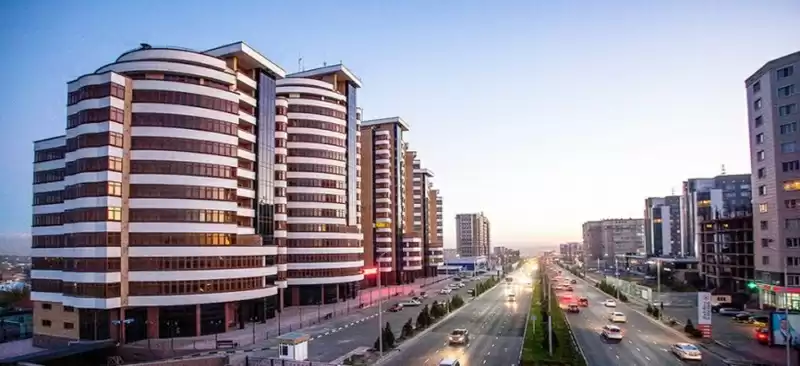
Embarking on a Shymkent City Tour is a captivating exploration of Kazakhstan’s southern cultural hub. Shymkent, known for its rich history, vibrant markets, and cultural diversity, offers visitors a glimpse into the region’s past and present. The tour typically begins with a visit to the Regional Local Lore Museum, where exhibits and artifacts showcase Shymkent’s archaeological finds, traditional crafts, and cultural heritage. Visitors can delve into the city’s nomadic roots, Silk Road connections, and Soviet-era influences through engaging displays and historical narratives.
Continuing the tour, travelers can explore Shymkent’s historical landmarks, such as the Abay Park, dedicated to the revered Kazakh poet and philosopher Abay Kunanbayev. The park’s serene ambiance, lush greenery, and monuments pay homage to Abay’s cultural legacy and contributions to Kazakh literature and music. Additionally, the tour may include visits to the Independence Monument, which symbolizes Kazakhstan’s sovereignty and national identity.
One of the highlights of a Shymkent City Tour is the opportunity to experience the city’s vibrant markets, where bustling bazaars offer a kaleidoscope of colors, aromas, and local crafts. Visitors can immerse themselves in the lively atmosphere, sample traditional Kazakh cuisine, and shop for unique souvenirs, textiles, and handicrafts.
Overall, a Shymkent City Tour provides a multifaceted exploration of history, culture, and everyday life in southern Kazakhstan, making it a rewarding experience for travelers interested in discovering the region’s cultural richness and dynamic spirit.
Regional Local Lore Museum in Shymkent
The Regional Local Lore Museum in Shymkent stands as a treasure trove of artifacts, exhibits, and historical narratives that illuminate the city’s rich cultural heritage. As the gateway to understanding Shymkent’s past, the museum showcases archaeological discoveries, traditional crafts, and ethnographic displays that delve into the region’s nomadic roots, Silk Road connections, and Soviet-era history. Visitors can immerse themselves in the diverse cultural tapestry of Shymkent through engaging exhibits that highlight the city’s evolution, traditions, and contributions to Kazakhstan’s cultural mosaic.
Abay Park and cultural significance
Abay Park holds significant cultural significance in Shymkent as a tribute to the revered Kazakh poet, philosopher, and composer Abay Kunanbayev. This picturesque park, adorned with monuments, lush greenery, and serene pathways, serves as a cultural oasis where visitors can reflect on Abay’s legacy and his profound impact on Kazakh literature, music, and philosophy. The park’s tranquil ambiance, coupled with its artistic and architectural elements, makes it a beloved gathering place for locals and tourists alike, fostering appreciation for Abay’s cultural contributions and the enduring values he represents.
Independence Monument and historical landmarks
The Independence Monument stands as a poignant symbol of Kazakhstan’s sovereignty and historical milestones in Shymkent. Erected to commemorate Kazakhstan’s independence from the Soviet Union, the monument embodies the nation’s spirit of freedom, resilience, and national identity. As part of a Shymkent City Tour, the Independence Monument serves as a reminder of Kazakhstan’s journey towards independence and its ongoing efforts to preserve its cultural heritage and national unity. Alongside other historical landmarks in Shymkent, such as the Old Town area and the Karasu bazaar, the monument contributes to a deeper understanding of the city’s past and its role in shaping Kazakhstan’s narrative of progress and development.
Conclusion
In conclusion, historical tours in Kazakhstan not only offer educational insights but also create meaningful experiences that celebrate the nation’s past achievements, present-day vibrancy, and future aspirations on the global stage. Exploring the historical tours in Kazakhstan unveils a tapestry of cultural richness, historical depth, and natural beauty that beckons travelers to delve into the nation’s diverse heritage. From the ancient wonders of Almaty’s Central State Museum to the spiritual sanctuaries of Turkestan’s mausoleums, each tour offers a unique glimpse into Kazakhstan’s past, present, and future aspirations. The rugged landscapes of Charyn Canyon and Aksu-Zhabagly Nature Reserve, coupled with the architectural marvels of Karakol and Shymkent’s cultural landmarks, paint a vivid picture of Kazakhstan’s dynamic identity.
Moreover, these tours serve as bridges connecting visitors with Kazakhstan’s nomadic legacy, Silk Road legacies, and Soviet-era history, fostering a deeper appreciation for the country’s diverse cultural tapestry. Whether immersing oneself in the vibrant markets of Shymkent or contemplating the artistic heritage of Aktobe, each tour is a captivating journey that leaves an indelible mark on the traveler’s heart and mind.
Read more Historical Tours in Uzbekistan


